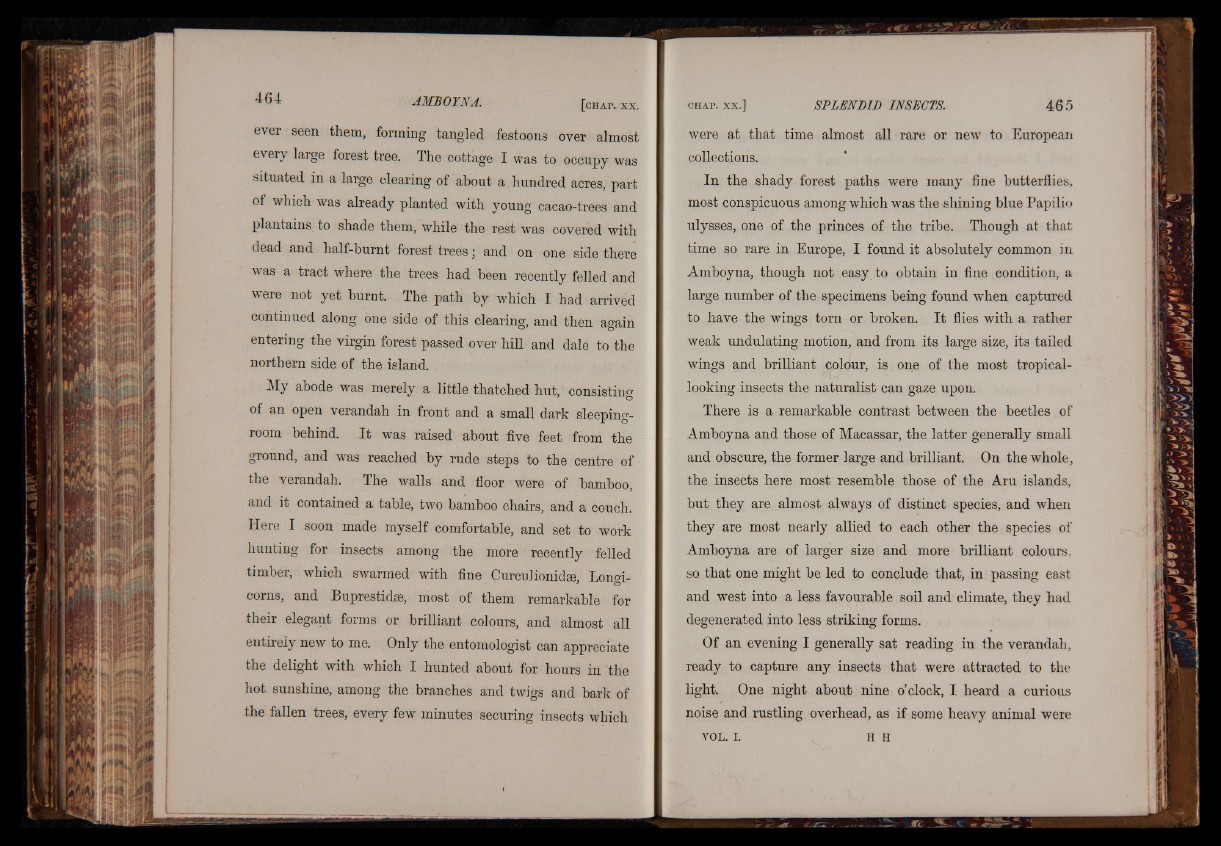
ever seen them, forming tangled festoons over almost
every large forest tree. The cottage I was to occupy was
situated in a large clearing of about a hundred acres, part
of which was already planted with young cacao-trees and
plantains to shade them, while the rest was covered with
dead and half-burnt forest trees; and on one side there
was a tract where the trees had been recently felled and
were not yet burnt. The path by which I had arrived
continued along one side of this clearing, and then again
entering the virgin forest passed over hill and dale to the
northern side of the island.
My abode was merely a little thatched hut,7 consistinOg
of an open verandah in front and a small dark sleeping-
room behind. It was raised about five feet from the
ground, and was reached by rude steps to the centre of
the verandah. The walls and floor were of bamboo,
and it contained a table, two bamboo chairs, and a couch.
Here I soon made myself comfortable, and set to work
hunting for insects among the more recently felled
timber, which swarmed with fine Curculionidm,* Longoicorns,
and Buprestidse, most of them remarkable for
their elegant forms or brilliant colours, and almost all
entirely new to me. Only the entomologist can appreciate
the delight with which I hunted about for hours in the
hot sunshine, among the branches and twigs and bark of
the fallen trees, every few minutes securing insects which
were at that time almost all rare or new to European
collections.
In the shady forest paths were many fine butterflies,
most conspicuous among which was the shining blue Papilio
ulysses, one of the princes of the tribe. Though at that
time so rare in Europe, I found it absolutely common in
Amboyna, though not easy to obtain in fine condition, a
large number of the specimens being found when captured
to have the wings torn or broken. It flies with a rather
weak undulating motion, and from its large size, its tailed
wings and brilliant colour, is one of the most tropical-
looking insects the naturalist can gaze upon.
There is a remarkable contrast between the beetles of
Amboyna and those of Macassar, the latter generally small
and obscure, the former large and brilliant. On the whole,
the insects here most resemble those of the Aru islands,
but they are almost always of distinct species, and when
they are most nearly allied to each other the species of
Amboyna are of larger size and more brilliant colours,
so that one might be led to conclude that, in passing east
and west into a less favourable soil and climate, they had
degenerated into less striking forms.
Of an evening I generally sat reading in the verandah,
ready to capture any insects that were attracted to the
light. One night about nine o’clock, I heard a curious
noise and rustling overhead, as if some heavy animal were